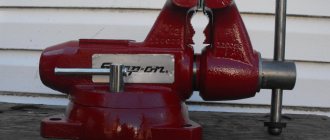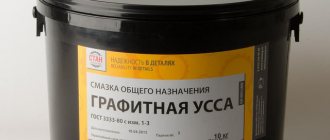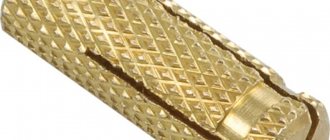Wood is a universal material used in capital construction, the manufacture of decorative coatings and furniture production. There are various forms of wood, differing in structure, technical parameters and production method. The most durable and aesthetic material, which was used long before the advent of glued and pressed wood pulps, is the product of sawing a solid tree trunk.
Material for production
The primary raw material for lumber production is tree trunks. They are subject to advance cleaning of branches and bark. The material can be either coniferous or deciduous trees. The latter are often used as lumber for finishing premises and buildings. Coniferous trees are used for the construction of load-bearing structures. The production of lumber has virtually no waste, since it is a valuable recyclable material that is used for industrial and domestic purposes.
Some of the available types of wood that are used to make lumber are birch and poplar. Common tree species are pine, spruce, linden, ash, maple, and larch. The most industrially significant wood is hornbeam, oak, and cedar.
Birch is considered a fairly light material; it has an unusual structure and reasonable cost.
Larch is used to produce a moisture-resistant product that is resistant to fungus and mold.
Ash wood has excellent elasticity and high strength properties.
Oak is used to create furniture, stairs, and floors because it has good strength characteristics. This is an aesthetically beautiful and quite durable material. It is quite popular, even despite the high cost.
Combustible materials that can catch fire include pine.
Spruce is a flexible and soft material that can be easily processed.
Types of lumber
The type of finished product is distinguished by the type of raw material (wood species), the equipment used, the technological process, and the choice of cutting method. The texture of the board directly depends on the last characteristic.
The types of methods for sawing logs differ in the direction of cutting the material. Sawing is divided into:
- transverse (wood is sawn across the grain);
- semi-radial or rustic (the cut is made at an acute angle to the fibers);
- radial (the axis of the cut passes through the core of the log);
- tangential (tangentially at some distance from the core).
Cutting logs across the grain is mainly used to create artistic parquet; the semi-radial type of cut is suitable for the production of flooring. Boards made using the radial method have a high strength index, are resistant to any deformation and external influence, and are also aesthetically beautiful. It is possible to achieve a pattern on the surface of the finished product, which consists of arches and rings, thanks to tangential cutting.
The surface of some boards may become peeling over time. A uniform texture is ensured by radial cutting. Lumber produced by this method, although high in cost, is quite in demand on the market due to its specific dimensions, optimal mechanical properties and the degree of wood shrinkage.
The process of drying boards can be carried out outdoors and in specially equipped rooms (chambers). When drying the finished product in the open air, the moisture content is about 20%, when using chambers - about 14%. The cut of the board can be trimmed (along the entire length of the product), as well as non-trimmed.
According to the degree of processing, the following types of lumber are distinguished:
- unedged - when there are untreated sections of logs, but there are no longer knots;
- edged - defective side parts of the log are cut down, resulting in a rectangular shape;
- planed - no roughness on one or more edges.
Processing method
After sawing from a tree trunk, the lumber can undergo additional processing.
Unedged - minimal processing when the edges are not trimmed. There may be wane left on them.
Wane is a defect when an untreated area with remnants of bark remains on the lumber. Where the wane is located, rounded ribs are usually obtained. Unedged lumber with wane requires additional processing.
Edged lumber - the edges are cut so that they are perpendicular to the faces, and the amount of wane does not exceed the permissible values.
the planed material undergoes another stage of processing. A small layer of wood is removed from at least one face and two edges. Planed materials are used for finishing surfaces.
Profiled lumber - the product is given a complex cross-sectional shape to improve joining. Docking can be done according to the “tenon and groove” principle, when a tongue and groove is cut out on one side and a groove on the other.
Lumber Specification
Lumber is different in shape, standard sizes, mechanical properties and has several types.
A timber is a log that has been hewn on all sides. Scope of application – material for the construction of buildings, an element in the creation of windows and stairs. The product has a thickness of 100 mm.
The bars are classified as miniature bars, since their thickness is less than 100 mm. There are unprocessed, planed (at least 1 side of the product is processed), calibrated (adjusted to a certain size) bars. Ready-made material is used in the manufacture of furniture, lathing, flooring, frames, gazebos, etc.
Boards are a material made from logs or bars. There are edged (with a smooth edge), edged on 1 side and unedged. Boards are also divided into calibrated ones (with specified standard sizes).
Sleepers are a material that has a high strength index and is susceptible to temperature changes.
Gorbyl. This product includes boards created by cutting logs. The product has a smooth and semicircular surface area.
Obapol is made from the side of a log. The finished product has only 1 flat side.
A rounded log serves as a good material for building a house. Its rounded, smooth shape and reliable locking system ensure the strength of the structure. This material is one of the most expensive in terms of price. But the cost is justified, since the construction does not require additional finishing work.
Profiled timber is also quite popular in construction. It is made either by milling or planing. The connection between the elements is strong and reliable. A structure made of such material will not require the construction of a strong foundation or any finishing.
Glued laminated timber. The raw materials for it are whole boards or individual pieces. The product consists of lamellas that are tightly connected. Such timber has high strength characteristics, is durable, and is resistant to external influences.
A block house is produced by cutting round logs according to the “square in a circle” pattern. It is used for external finishing work, as it has good heat and sound insulation properties. It also attracts with its strength characteristics.
Beam or whetstone?
Beams and lumber are a type of lumber with a square or rectangular cross-section.
- Beam is lumber, the thickness and length of which is more than 10 cm. Beams can be two-edged, three-edged and four-edged, depending on the number of sawn planes (edges). In most cases today you can encounter four-edged timber.
A separate variety is laminated veneer lumber. Formally, it cannot be classified as lumber; it is made by gluing together several wooden lamellas.
- Bars are lumber, the sides of which should not exceed 10 cm, and the width cannot be more than two thicknesses.
Pros and cons of lumber
Humanity has been surrounded by wooden products for many centuries. Wood was used to create residential buildings, churches, baths and similar buildings. In addition to the premises, window frames, tables, chairs, cabinets, beds, etc. were also created. This material is no less relevant today due to its characteristics. Below are the advantages and disadvantages of lumber.
Advantages:
- the material has a high load-bearing capacity, despite its low weight;
- characterized by simplicity and ease of processing (drilling, cutting, manufacturing of various shapes);
- minimal labor costs during installation;
- the natural composition ensures safety for humans and the environment and is not prone to cause an allergic reaction;
- material processing work does not require a lot of time and money;
- aesthetically pleasing material;
- the natural smell of wood has a beneficial effect on the indoor microclimate;
- lumber comes in many shapes and sizes;
- low cost of the product.
Flaws:
- the material can quickly ignite;
- susceptible to the influence of fungus, mold and insects;
- prolonged exposure to moisture leads to rotting processes.
To provide this building material with properties such as wear resistance and durability, it is treated with special materials. substances that protect lumber from negative external factors and the ability to quickly ignite.
Regulatory Requirements
The sawmill produces lumber following the following standards:
- GOST 18288-87. The document describes the scope of application of all types of lumber and contains terms relating to wooden products.
- GOST 2140-81. From the document you can find out what kind of defects and mechanical damage there are in saw logs and finished products.
- GOST 8486-86. This standard consists of tables and answers the question of what lumber is and describes the types of products.
- GOST 24454-80 and 3808.1-80. They determine standard dimensions and tolerances (in mm) for softwood lumber and contain rules for drying and storage. For deciduous trees, GOST 2695-83 is provided.
- GOST 16588-91. The standard contains requirements for the moisture content of lumber products.
- GOST 20022.2-80 and 20022.6-93. Contains instructions for protecting wood from fire, fungus and insect pests.
Types of lumber
Determining the grade of lumber is done by assessing the structure of the worst side, face, edge and section.
A selected grade product must be free of rot, mold, fungal stains, growths and any foreign inclusions on the surface of the material. There should also be no cracks from shrinkage. The number of fused healthy knots should be no more than two per 1 m of length. Shallow cracks on the edge and layer of the product should not exceed 16% of the total area, and deep cracks - 10%. Such building materials are often used in automotive and shipbuilding.
The first grade is used in the construction industry. Its main characteristics are the absence of dry knots that stagger; healthy knots should be no higher than 1 cm; There should be no cracks larger than 1 cm. There should also be no rottenness, overgrown wounds on the wood, mechanical damage, mold, foreign inclusions and young layers of wood.
The second grade is often used for furniture production. Such lumber is characterized by the following properties: the total length of cracks does not exceed 1/3 of the total length of the product; the number of wormholes is no more than 3 per meter of length; there is no rottenness, traces of insect damage, mechanical damage, or other inclusions.
The third grade is used to create containers.
The fourth grade has found application in the construction of domestic premises, utility buildings, and gazebos. In addition, boxes, scaffolding, pallets, and formwork are made from lumber of this type.
Areas of application
Each industry has its own lumber and products made from it.
Wood is used:
- in shipbuilding and mechanical engineering as the lining and frame of boats, vessels, lifeboats, lake and sports transport, decking, for bodies, and other machine parts;
- in agriculture, machine parts are made from wood, outbuildings, warehouses, and hangars are built;
- In the construction industry, lumber is needed for repair and maintenance work and for the construction of capital structures, surface finishing, manufacturing window and door fillings, and carrying out auxiliary work.
Lumber of a certain quality is used in the furniture industry and in the production of packaging .











